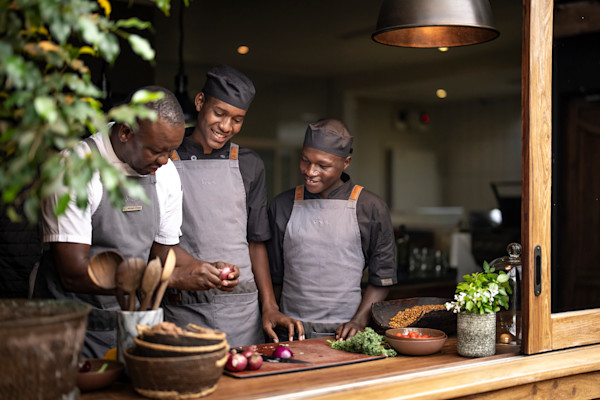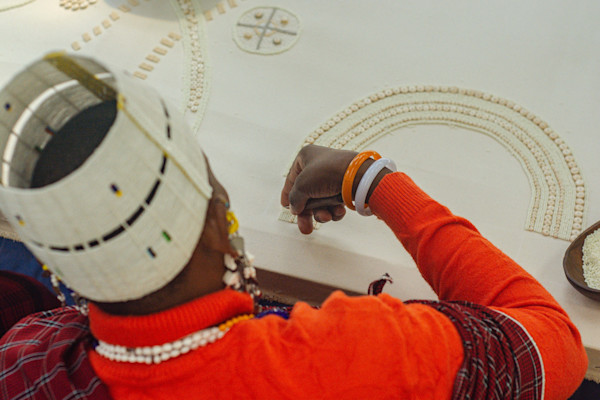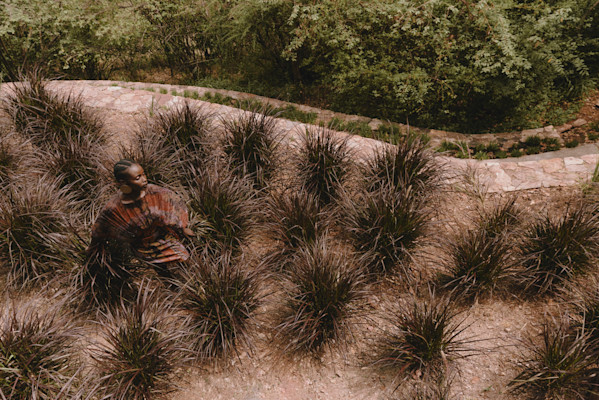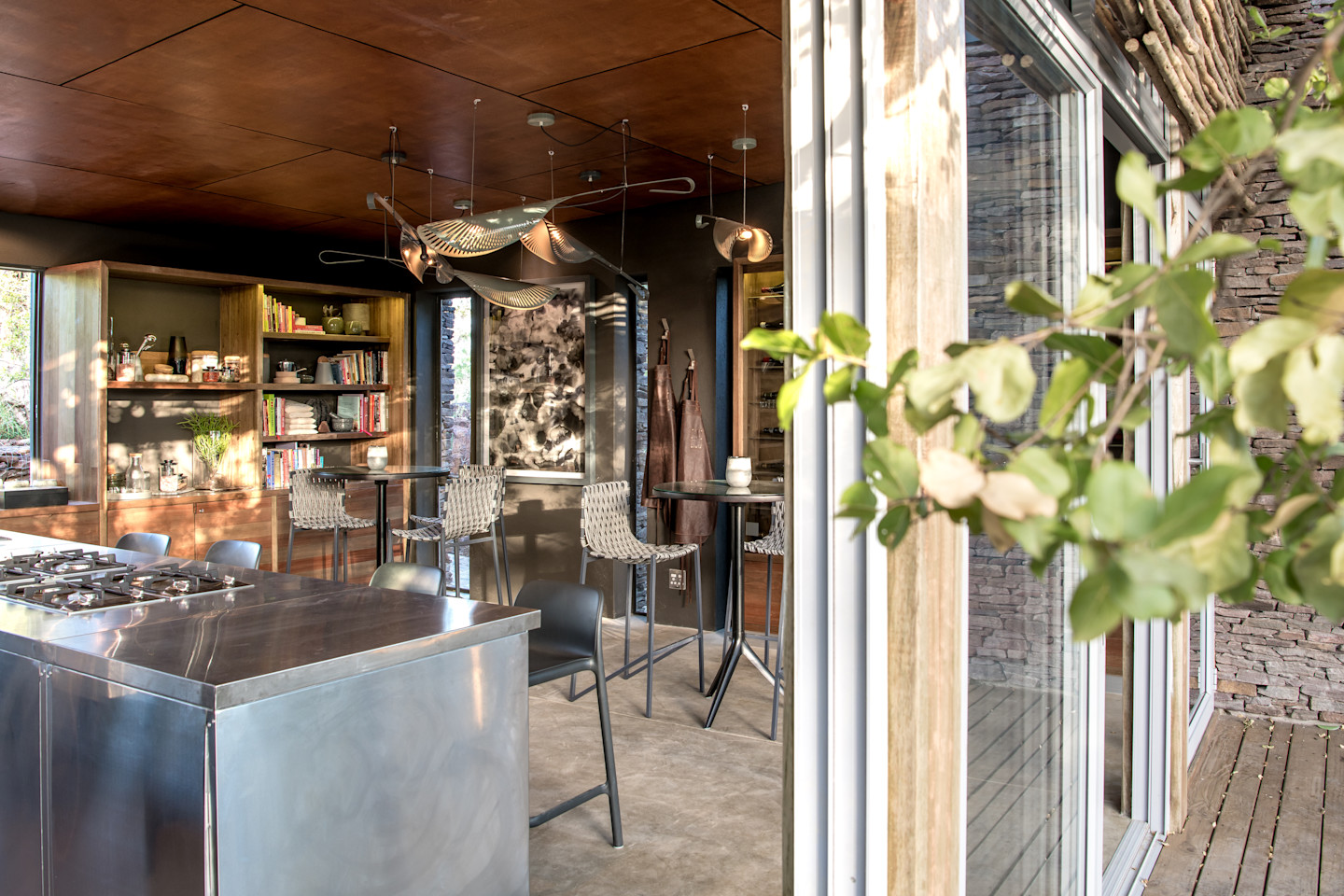
January 2023
Community
People of Singita
Experience
Guest writer: Alexander Matthews cooks iconic South African dishes at Singita Lebombo
in CommunityShare:
Guest writer: Alexander Matthews cooks iconic South African dishes at Singita Lebombo
Alexander Matthews has written about travel, conservation and food over the last decade for both South African and international publications. Here he shares his cooking class experience led by students of the Singita Community Culinary School – one of the highlights of his stay at Singita Lebombo.
As a South African now living in Northern California, there are many reasons I miss my home country. One of the biggest, though, is its flavourful foods – the dishes borne out of a melting pot of diverse cultures and culinary traditions. A cooking lesson while staying at Singita Lebombo Lodge in the Kruger National Park, hosted by students of Singita’s Community Culinary School offered a wonderful opportunity to be reacquainted with the vibrant, nostalgic flavours of my motherland – and to learn how to recreate them back in my new home.
Since 2007, the Singita Community Culinary School has provided rigorous professional culinary training to young members of nearby communities. The school is a remarkable success story, with over 95% of students employed full-time upon graduation – in Singita’s kitchens and elsewhere in South Africa’s hospitality industry.
More recently, guests of the two lodges in Kruger – Sweni and Lebombo – have had the opportunity to participate in a lunchtime cooking lesson with the School’s talented students. As befits a class that you’re taking while on holiday, you get to choose how actively you’d like to be involved – and whether you’d prefer to watch the magic unfold or roll up your sleeves is up to you.
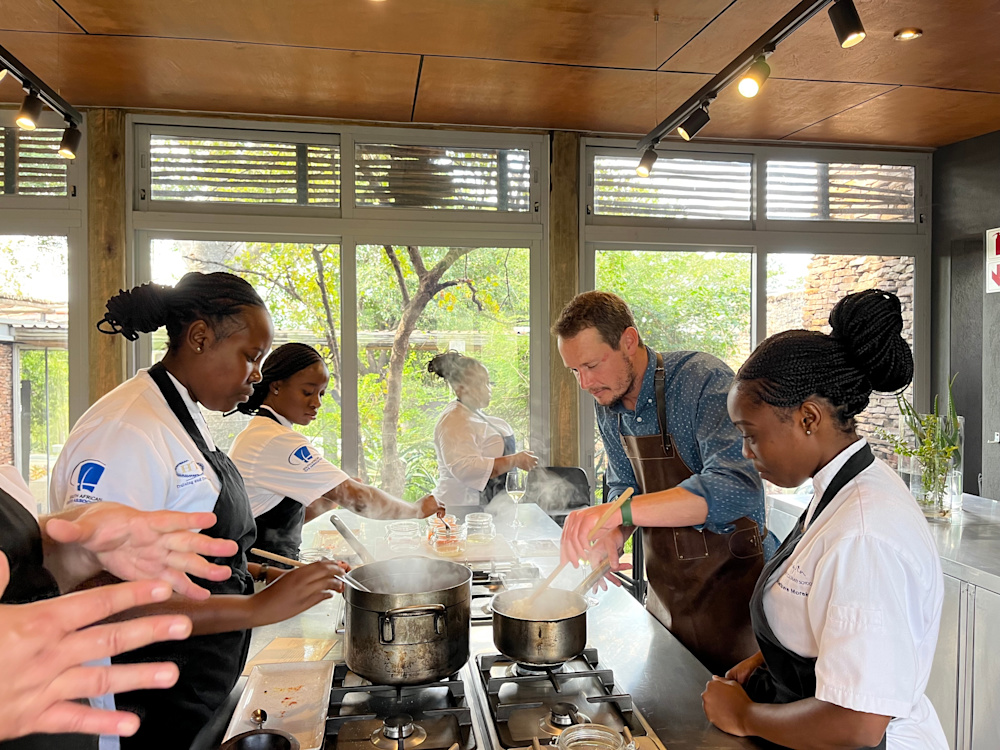
During his stay at Singita Lebombo Lodge, Alex took part in a cooking class led by students of the Singita Community Culinary School
Cooks in action
On the menu for our lunchtime lesson is umngqusho (samp and beans), chakalaka (a spicy vegetable relish), Durban’s famous chicken curry and koeksisters (a traditional fried-dough dessert soaked in syrup). When we arrive at the School’s state-of-the-art demonstration kitchen, the students have already done the prepping, and everything needed for the dishes, including a trove of spices, is neatly arrayed in stations. Overseen by the School’s charismatic Thys Taljaard, the students get to work, with our contribution mostly consisting of occasional pot-stirring, and questions about technique.
At the koeksister-making station, students Des and Sibusisu show me how to roll and plait the dough (though I must admit my efforts weren’t as impressive as theirs). It’s thrilling to see how, after being slipped into piping hot oil, the nascent koeksisters puff up into their familiar shapes.
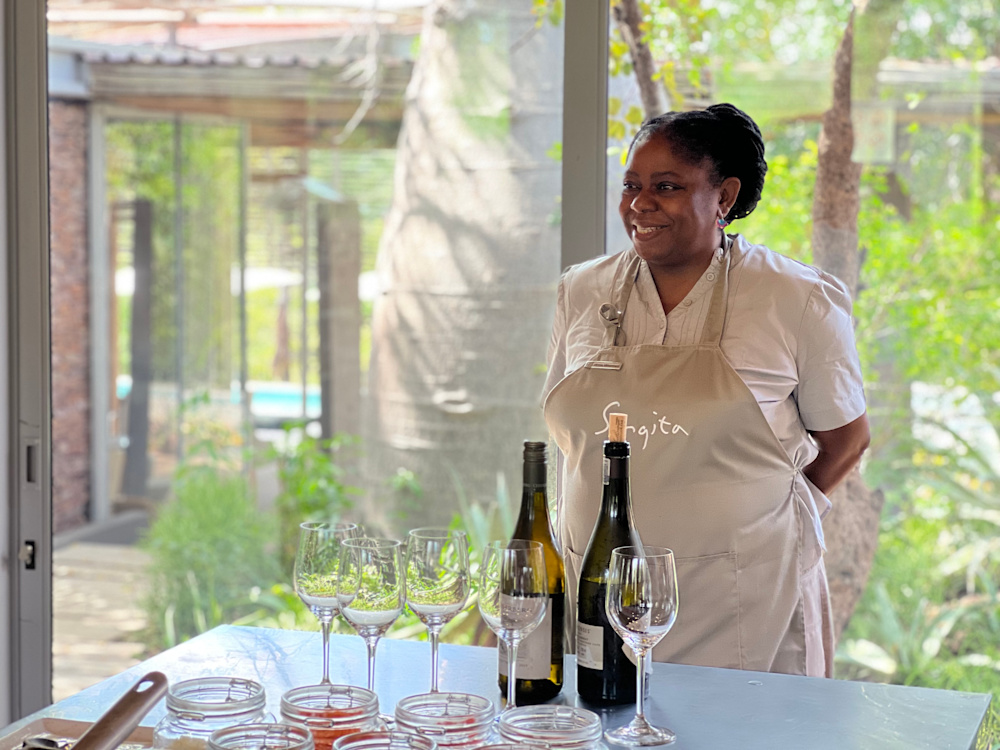
Sommelier Minnie Mthombeni pairs the locally inspired dishes created during class with complementary wines
Singita Lebombo sommelier Minnie Mthombeni arrives with two wines to pair with the meal. The 2013 Capensis Chardonnay – creamy, yet mineral – turns out to be the perfect counterweight to the umami-rich and risotto-like umngqusho, while a 2019 Cederberg Bukettraube’s vibrant fruit and crisp finish sublimely complement both the fragrant feistiness of the chakalaka and the velvety heat of the Durban curry.
I almost get teary eyed as I eat: these familiar dishes have been so boldly, beautifully rendered – a luxurious take on classic South African comfort food. As we’re leaving, we receive a pack of recipes, which includes the ones made in the class. I feel overjoyed at the prospect of recreating these nostalgic, mouthwatering tastes of South Africa once I get back home.

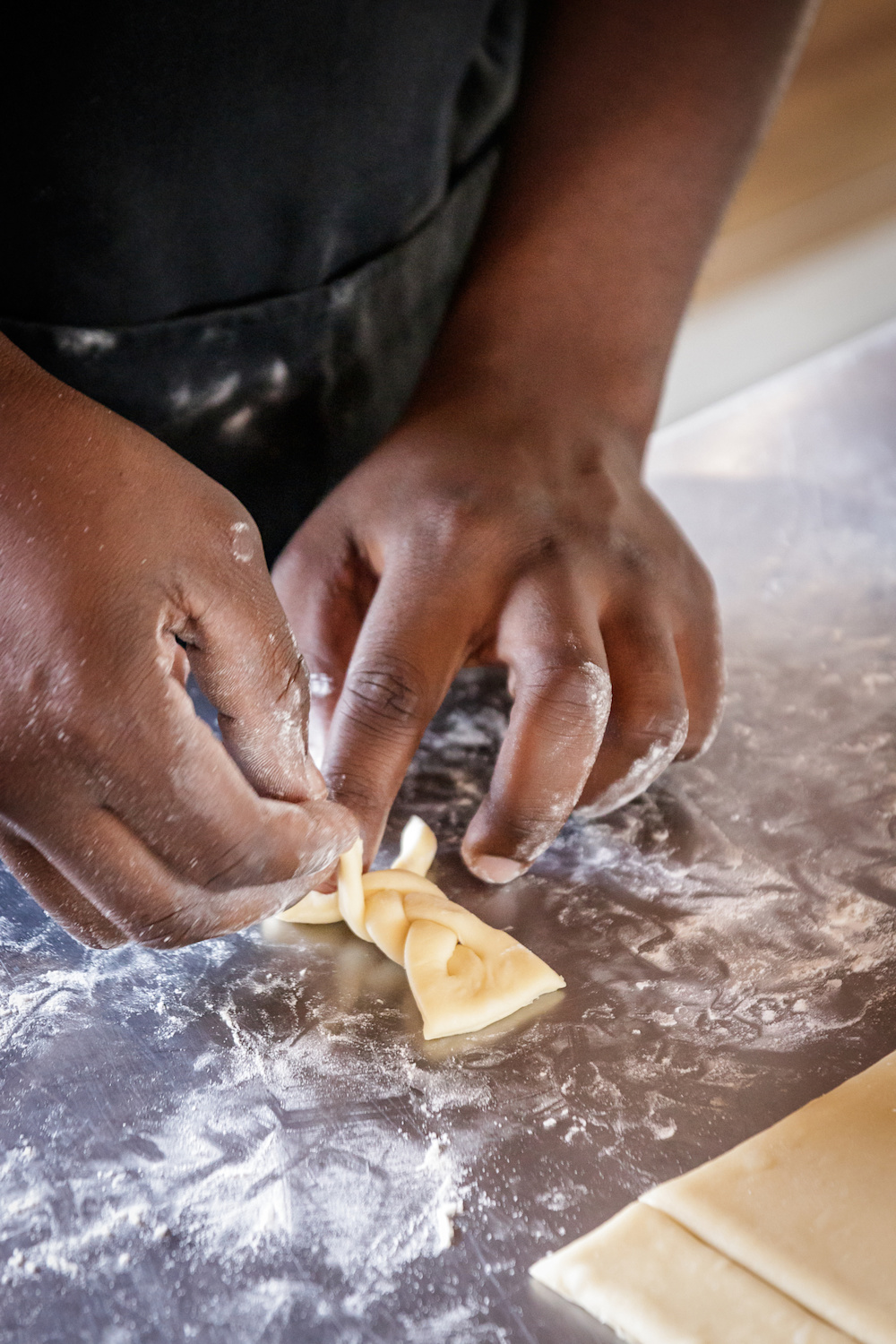
The chefs' elevated take on iconic South African dishes evokes nostalgia for Alex and inspires him to recreate them on his return to the US
A tale of two talented chefs
Before heading back to our room for a pre game-drive nap, I sit down with Dzunisani Mnisi (a 2016 graduate of the school) and Busi Chawane. Both exemplify the immense talent and grit that can be found in Singita’s kitchens.
“I always wanted to be a chef,” Busi tells me. Although she wasn’t accepted into the Community Culinary School, this did not deter her from her goal. Soon after joining Singita as a dishwasher in 2014, she started training in the kitchen in her free time, arriving several hours before her scullery shift to learn basic cooking techniques. Her hard work saw her moved to the staff kitchen where she cooked for two years, before she was promoted to the lodge kitchen.
Today, she enjoys her job as a demi chef ‘very much’. "The thing I love most about my job is you’re learning new things every day because you’re not in the same section every day; you’re moving around." Busi believes that determination is key to success. If you know you want to be a chef, you can do it if you have hope and passion. "It’s not easy, but as long as you want to get there, you will."
Dzunisani was determined to follow in the footsteps of her mother, also a chef. She was one of only a handful of students selected for the Community Culinary School’s 2015 intake. "I always wanted to learn more; I always kept asking questions," she recalls – and it is this curiosity that contributed to her graduating at the top of her class and landing a commis chef position in Singita Kruger National Park’s kitchens.
To be a successful chef, she says you must 'believe in yourself, and love what you're doing'. Today, her role as junior sous chef is challenging but rewarding. “It is exciting when I get good feedback from a guest,” she says. One day she would like to open her own restaurant serving Italian food — one of her favourite cuisines.
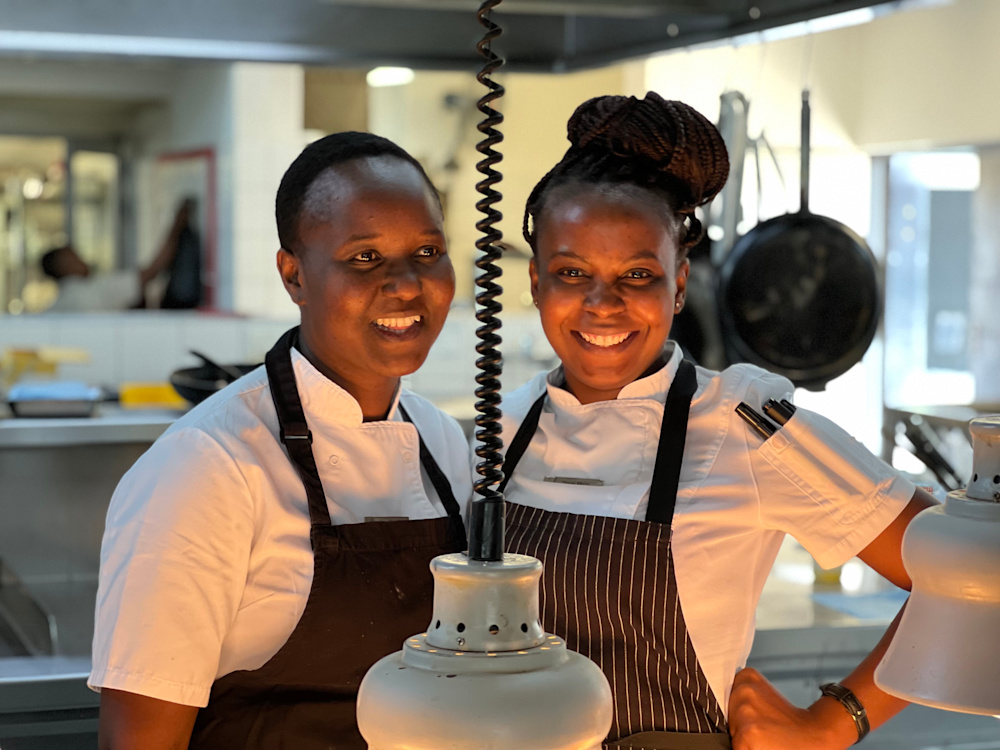
Busi Chawane and Dzunisani Mnisi (a 2016 graduate of the school) are two of the talented chefs in Singita's kitchens and exemplify the ambition and passion of our culinary teams
Be part of training tomorrow’s chefs
Learn more about this successful community programme, and how you can help support an aspiring chef’s dreams here >
